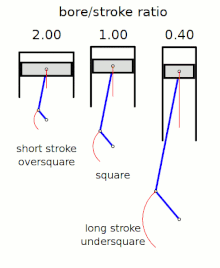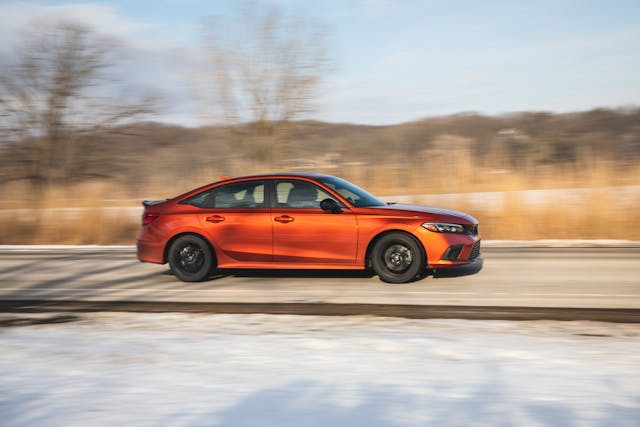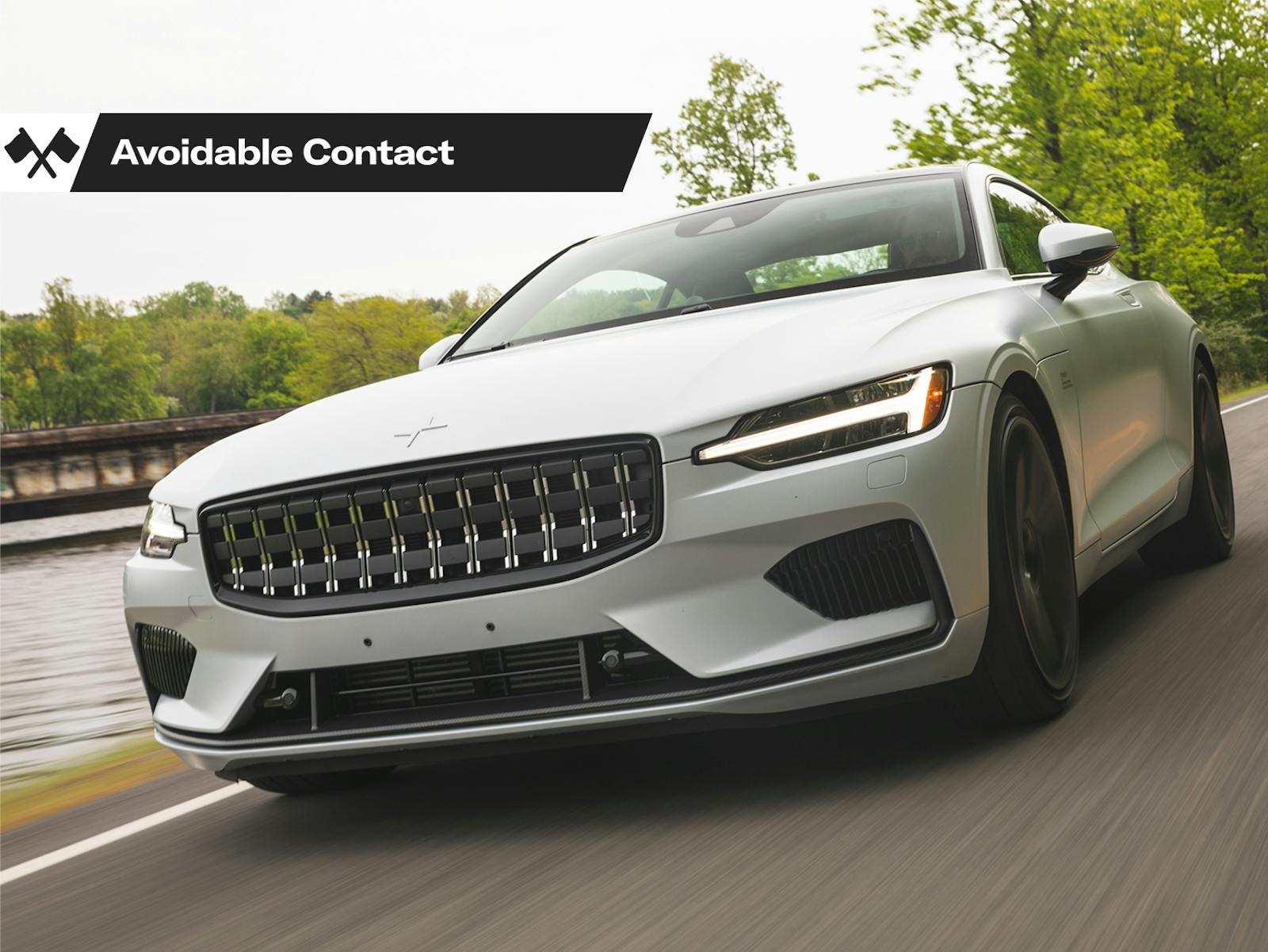Avoidable Contact #137: The low revs of high-stroke misery motors

Instant karma’s gonna getcha! How the nice old lady in the GMC Terrain must have laughed as I bounced my carotid artery off the seatbelt of a trendy-bronze 2022 Civic Si—right next to her on the road. The scenario was this: I’d been following her down a one-lane road at approximately 20 mph below the posted limit of 45 mph. Why was she going so slow? Your guess is as good as mine. After about 10 minutes of this torture, we came to a stoplight. The light turned green. She turned right, into the inside lane, at a pace best described as “unhurried.” I turned into the outside lane and gave the mighty 2022 Civic Si all the beans it could muster.
My intention was to fly by and get in front of her before the road went down to a single lane yet again—this was rural Michigan, the existence of a second lane is a gift so brief as to befuddle the Venerable Bede’s sparrow—and although the Civic isn’t what you’d call “fast,” it is certainly capable of out-accelerating a GMC Terrain driven by someone who doesn’t have any interest in making good time. So as soon as I got the steering wheel straightened I went from half to full throttle, expecting to get past the Terrain, then shift into second gear.
What actually happened was this: The Civic surged forward for about half a second, then hit the rev limiter at a less-than-robust 6500 rpm, causing me to pitch forward like the proverbial drunken sailor. It took me a moment to understand what had happened, and while that was happening the Terrain retook the position! Flopping around in confusion like the fish in that Faith No More video, I grabbed second, sidestepped the clutch, and completed the pass just a moment before brick-walling the limiter again, at which point I sat up straight, shifted to third, and pulled away with all the dignity I could muster, which wasn’t much.
I’ll have more to say about the Civic Si and its less-than-thrilling powertrain in a review next week, but for the moment I’m more concerned about the general trend represented by this otherwise quite pleasant little Honda. The 1999 Civic Si could rev to 8500 rpm, although you might not want to because the power dropped off at 8000 or so. The last non-turbo Si called time at 7000. Now we’re down to 6500. What’s next, a Civic Si Duramax that makes peak power at 2750 and redlines at 3100? It was frankly a relief to return the Civic to our Ann Arbor office and get back into my 2014 Accord V6 coupe, which runs to 7200 rpm and pulls hard all the way to the limit.
It’s not just Civics, and not just Hondas. With a few thrilling exceptions, such as the upcoming C8 Corvette Z06 that will spin to an astounding 8600 rpm, and the 32-valve Ford V-8s that are only truly happy on the right side of the tach even when they’ve been stuffed in the nose of an F-150, pretty much every car on the market is turning fewer revs than its predecessor from 10 or 20 years ago. This is particularly true when you look at entry-level enthusiast-oriented cars. Even Mazda has yo-yo’d the Miata’s redline a few times: the NB generation was 7250, the NC1 dropped it to 7000, the NC2 raised it to 7500, the NC3 held that line, the ND1 dropped back down to 6800, and the ND2 restored it to 7500.
There are legitimate engineering reasons for the gradual decline in rev limits, and the most significant of them is the philosophical change in passenger-car engine design to “undersquare” engines. Feel free to skip this if you already know it, but a “square” engine is where the bore (diameter of the piston, basically) is the same as the stroke (length of piston travel). An “oversquare” engine has more bore than stroke, and an “undersquare” engine is the reverse.
Imagine two engines of equal displacement, turning at the same RPM. One is oversquare, one is undersquare. The pistons in the latter engine are smaller, but they have to move a longer distance with each revolution. Do we have a crummy Wikimedia image for this? Yes we do:

This is a drastic over-simplification, but your primary limit to engine speed is piston speed. The faster the piston moves, the lighter (meaning expensive) and more durable (also meaning expensive) it has to be. If you’re just looking for the maximum possible power from an engine, you do what the motorcycle engine builders (and Formula One constructors) do: you make the most oversquare engine possible, and you enjoy the combination of sky-high redline and big power. For everyone whose definition of automotive enthusiasm doesn’t include tractor pulls, oversquare engines are preferable. Most LS V-8s are oversquare, most German V-8s are oversquare, Ford even snuck a significantly oversquare configuration into its new “Godzilla” truck engine, which is one of the reasons I have a Godzilla on order as we speak.
(Want more info on how it works? Check out this article.)
By contrast, the new 1448-cc Civic engine is massively undersquare, with a 73-mm bore and an 89.4-mm stroke. Compare to the 1441-cc Kawasaki ZX-14R, which has an 84-mm bore and 65-mm stroke. Absent a significant investment in engine materials, the redline is going to be significantly lower than it would be with an oversquare engine of the same displacement, and so it is with the Civic. This isn’t entirely fair to point out, because the expectations for reliability and economy aren’t the same, but the oversquare Kawasaki revs to 11,000 rpm, which is a bit more than the 6500 of the Honda. So why does Honda do it, and why are other automakers going in the same direction?

The answer, of course, is the combination of economy and emissions. There’s an optimum piston speed for fuel economy; go faster than that and you don’t actually burn all the fuel you put in, go slower and the cylinder walls actually cool off between piston strokes, leading them to “steal” heat from the next ignition cycle. So the automakers optimize engine size and configuration for the conditions found in the EPA test. The same is true for emissions. Short-stroke, big-bore engines are inherently dirty, because they don’t get as much of their fuel burnt.
Long-stroke engines also have more torque than their short-stroke equivalents, so they feel more powerful at low speeds. Last but not least, there’s a nice symmetry between turbocharging and long-stroke design. The biggest annoyance with a long-stroke engine is making sure you get the cylinder completely filled with air, since the valves are comparatively small. Turbocharging fixes that problem, because the incoming air is pressurized.
Having run more computer cycles on the problem than a Bitcoin farm on the outskirts of Shenzhen after a random Elon tweet, the automakers have determined that long-stroke, low-displacement turbo four-bangers are the most efficient choice for everything from a Civic to a BMW 7-Series. (You didn’t mis-read that; dealerships in the United States won’t sell you the two-liter “730Li,” but you can get it most places around the world.) Engines of this configuration have constant torque across a broad range, they are capable of moving today’s obese crossovers with some mild enthusiasm, and they return outstanding fuel-economy numbers on the EPA cycle. (The real world is a bit different; that sluggish little Civic returned just 31.7 mpg in my hands, compared to 29.2 mpg for my much faster V6 Accord under similar conditions.)
Not every undersquare engine is miserable to drive or experience. The aforementioned ND2 Miata is awfully undersquare, and it’s a joy. Here’s my 89-mm x 93-mm racing Accord (as opposed to the above-mentioned street Accord) running down a few oversquare Thunder Roadsters and square Coyote-engined Mustangs:
To be fair, however, pretty much every modern gasoline engine really wakes up in race tune with open catalysts, unless it’s a Nissan VQ, the worst-sounding engine in human history. The VQ35DE, by the way, is massively oversquare. By the numbers, it should be the most characterful V-6 available in anything besides an Alfa Romeo; the miserable way it sounds and behaves in practice is one of the great automotive mysteries.
The industry’s love affair with undersquare turbo engines means that today’s cars tend to be quieter, torquier, less rev-happy, and less rev-capable than their predecessors. In other words, they’re behaving more and more like the electric vehicles that are supposed to eventually replace them. To your average motorist, who rarely uses more than half throttle and who is actively upset by rev noise in a powertrain, it’s probably a good thing. To enthusiasts, it’s a nightmare in progress.
No doubt that’s why the expensive, exotic four-and-two-wheeled hardware in the fancier dealerships continues to offer oversquare, high-revving options. But the clock is ticking, so if you want an 8200-rpm anything, now’s the time to act. We’re in the last development cycle of gasoline engines for the foreseeable future. Once the government-industrial-media complex realizes that not all the battery questions have real-world answers, maybe we’ll get another round of “ICE.” Or maybe we’ll all really come to enjoy the time we spend making new friends in the charging-station lines. Anything could happen. In the meantime, don’t be surprised if your next enthusiast vehicle requires you to lower your expectations the same way they lowered the redline. And if you’re lucky enough to get a manual transmission, keep an eye on the tach. In the words of a pop song that didn’t quite reach “Instant Karma” popularity levels: Protect Ya Neck!

